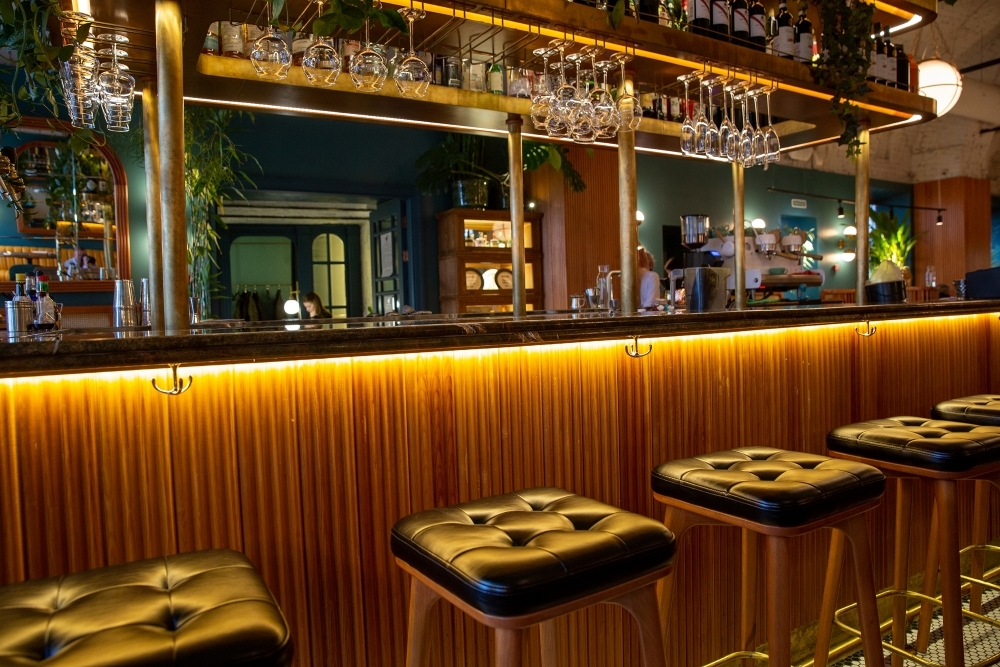The Beauty and History of St Pancras Station
St Pancras Station, one of the most famous landmarks in London, has a long and rich history that spans over 150 years. The station was opened in 1868 by the Midland Railway company and was originally meant to serve as the London terminus for the company. The station itself was designed by William Henry Barlow, a civil engineer who worked on many railway projects and was instrumental in the commissioning of the Clifton Suspension Bridge in Bristol. Barlow engineered the single-span train shed for which the station is famous, and which was the largest in the world at the time the station was built. The building was created in a Gothic Revival style and originally known as the Midland Grand Hotel. It was designed by Sir George Gilbert Scot, who also designed King’s College and the Albert Memorial in Hyde Park, and is an iconic feature of the station.

The Age of The Railway
St Pancras Station played an essential part in expanding railway networks across the United Kingdom during the nineteenth century. The Midland Railway company wanted to establish a direct route from the Midlands to London so that they could transport goods and passengers on their own tracks, rather than relying on those of their rivals. The station was soon a major success and an important hub for travellers.
The Last Stop
However, by the mid-twentieth century, the station was no longer the success it once was. The hotel closed for business in 1935, and by the 1960s the station was under threat of demolition as it had been badly damaged during both World Wars. It was only saved thanks to the hard work of Sir John Betjeman and the architectural historian Nikolaus Pevsner. Betjeman, who was a poet and broadcaster, was a member of The Victorian Society and passionately believed in defending Victorian architecture. He called the plan to demolish the station a “criminal folly.” He often wrote about his love of trains and architecture in his poetry, and he is remembered as a spirited campaigner for historic buildings.
Preserving History
In the 2000s, St Pancras Station underwent an £800 million restoration project, which turned it into a modern transport hub and preserved its beautiful historic features. The station reopened in 2007 and became home to the Eurostar, which connects London with Paris and Brussels. What was once the Midland Grand Hotel is now the St Pancras Renaissance Hotel, and the new concourse is filled with shops, restaurants, and art.
The Art of Travel
There are a number of works of art on display at the station, the most famous of which is The Meeting Place, by artist Paul Day. The Meeting Place is a bronze statue of a couple kissing, evoking the romance of travel. There was some controversy in 2008 when Day added a bronze relief frieze around the plinth of the statue which showed a commuter falling from the platform into the path of an oncoming underground train driven by the Grim Reaper. Due to the controversy, Day revised this frieze before the final version was installed. Upstairs is a bronze statue of John Betjeman, who is gazing up at the roof designed by Barlow, in honour of the work Betjeman did to save the historically significant station.
The Brewery Express Years
The station has also played a central role over the years in catering to Britons’ love of beer. In the nineteenth century, beer came from Burton-on-Trent to London and its major arrival point was St Pancras, where the beer could be stored in a huge warehouse and in the vaults underneath the station. Prior to the railway, it could take up to three weeks to get Burton’s beer to London from the midlands. However, with the arrival of trains in Burton in 1939, things began to change. In 1879, with increased possibilities for moving beer across the country, output rose from 30,800 barrels to 850,000 barrels. When St Pancras opened, Burton brewers agreed to supply all their beer via the Midlands Railway company, meaning it passed through the beautiful station. The railway company built a warehouse that was connected to the station to store 120,000 barrels of beer. To meet demand, the railway company also designed the cellars of St Pancras to store beer. The columns were similar to the warehouses in Burton, with a distance of 14 feet between them so they could fit multiple beer barrels. The vaults were fitted with a hydraulic lift and with space for wagons to manoeuvre.
Of course, the popularity of beer in the nineteenth century reflects the fact that water was often unsafe to drink. This issue was taken up by the Metropolitan Drinking Fountain and Cattle Trough Association, who aimed to tackle poor access to safe drinking water across the city of London. In 1877, they installed the drinking fountain at St Pancras. It is made from Portland stone with an eared granite fountain niche and bowl. It is located near the southern end of Pancras Road. Not only was the station instrumental in keeping the city in supply of plenty of beer, but it was also key in bringing a supply of fresh water to travellers and to the people of London.
A Historical Hub
Incredibly, there are now luxury apartments in the clock towers of the St Pancras Chambers building, featuring Victorian and reclaimed features. These apartments retain many of the original features designed by George Gilbert Scott and gesture towards the enduring impact of his design on the city of London and its inhabitants.
The historic and cultural significance of a place like St Pancras cannot be overstated. As an important railway hub connecting London with the Midlands, the station facilitated the transport of people and goods across the country, integrating and expanding cultural practices and exchange—not least through the movement of beer! It is also an example of some of the best of Victorian architecture and engineering, with its impressive train shed and its gorgeous hotel and frontage, marrying utility with beauty and comfort. Today, it is an international hub, continuing to link London with the rest of the country and with Europe.



